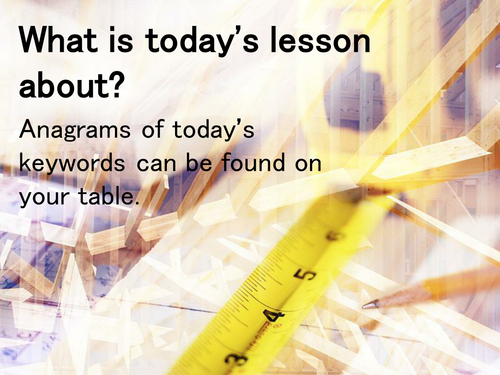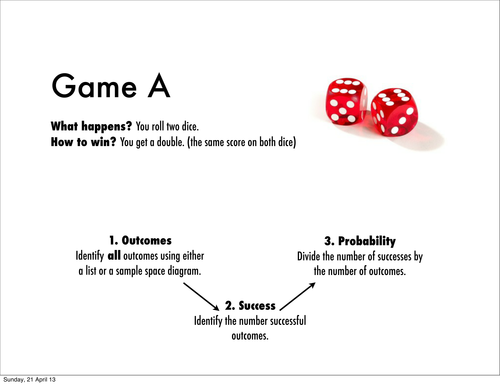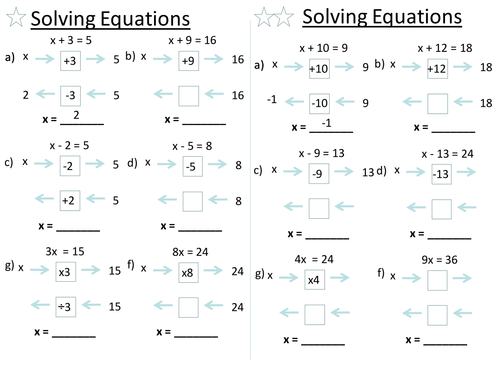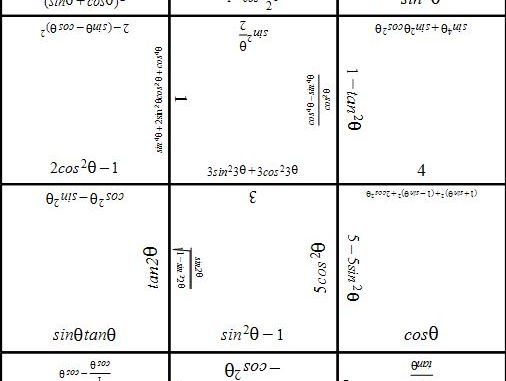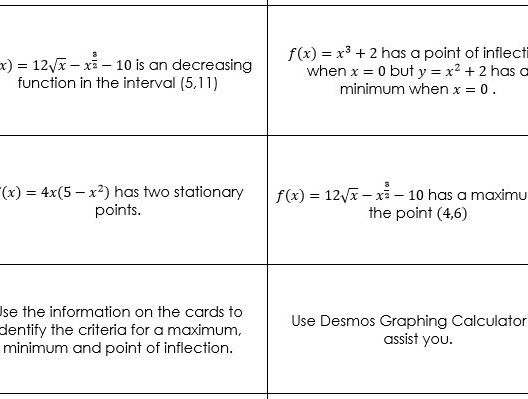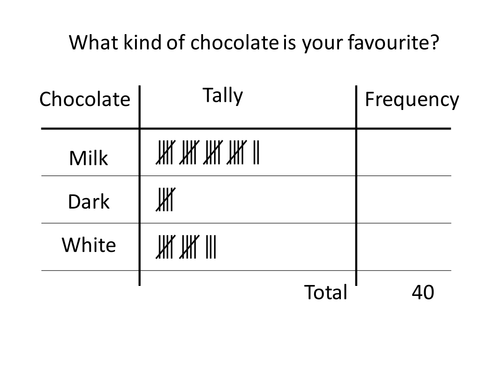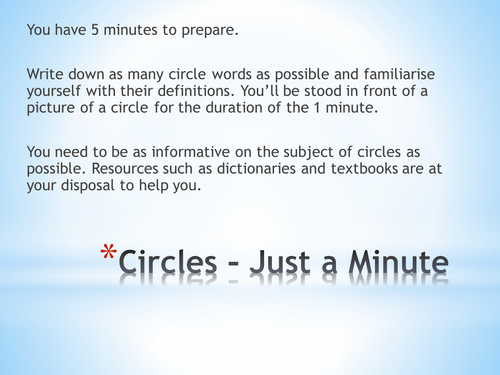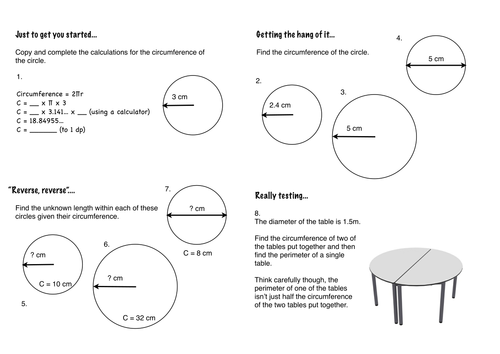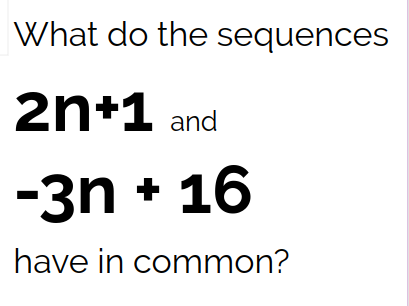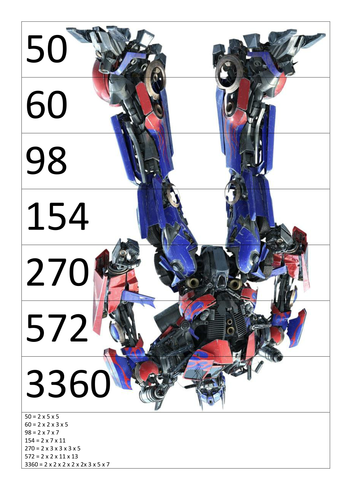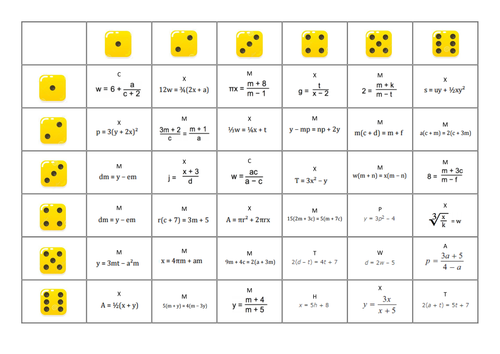
73Uploads
310k+Views
249k+Downloads
Mathematics

Classifying Quadrilaterals
I wasn’t quite happy with what was out there so created these 3 files. One blank, one complete(potentially a knowledge organiser for quadrilaterals) and a third for a quick quiz.
Bonus resource on Always, Sometimes, Never related to quadrilaterals.

Circle Theorems
An extension of a NRich problem whereby students investigate a 10 dot circle (printout available from NRICH under printable resources).
The problem begins by consolidating isosceles triangles within a 10 dot circle. The problem then moves into exploring a series of circle theorems using the triangles they found from the first 2 problems.
Once students have done this they have the basis from which to generalise circle theorems.

Probability Games
A series of probability scenarios to consider the outcomes for, identify successes and then calculate the probability for.

Expanding Brackets
Graduating/Differentiated worksheets on expanding brackets designed originally for a year 7 group. S
They are scaffolded to use the 'Santa's Hat' method of expanding a bracket.

Trigonometric Identities Tarsia
A tarsia puzzle designed to develop students' use of trigonometric identities. Useful for both initial teaching and revision and recap for C2.
Involves numerous problems all requiring the application of the two most basic trigonometric identities.

C2 Differentiation - Discovering Maximums, Minimums and Points of Inflection
Use the mix of 3 resources to introduce maximums, minimums and points of inflection. Students are encouraged to refer to graphs drawn via the free Desmos Graphing Calaculator and complete the set of rules they need to go on to tackle the chapter exercises or past exam questions. They'll also have a model answers to annotate and analyse for a method.

Maths in Careers - National Careers Week
A selection of starters/do nows to aid National Careers Week and the application of mathematics to a wide variety of jobs.

Area of a Segment
I couldn't find a good resource on area of a segment so I spent some time developing one.
The idea is to provide students with 5 breadcrumbs that then lead to the final outcome, namely solving segment area problems.
The powerpoint has 5 steps that provide practice of all the assumed knowledge and this then enables student to guess the objective of the lesson and subsequently solve two A* questions taken from the &'Bland&'; question papers ( A* questions, Paper 2) which couldn't be linked.

Interior Angles
A PPT file support the discovery of interior angle properties of polygon. This is a follow on lesson based around a table with the number of side, number of triangles and interior angle sum columns.
A number of tasks at the end extend the ideas beyond the previous lesson.

12 days of Construction
Involves groups of students developing their own skills in construction using independent learning. The team challenge is to produce the final piece of presentation work over a series of lessons.
During these lessons the teacher or more able students provide demonstrations of construction techniques that assist in the completion of the task.
Due to the repetition students consolidate their understanding of key elements and focus on supporting others.
The task is linked to the 12 days of Christmas.

Probability - Expected Value
An opportunity to explore expected value through two way tables ( a potential examination combination). You'll find a modelling question, open task to explore, investigate and question as well as a extension question to really put the mathematics to good use. Enjoy!

Angle Problems
Solve angle problems.
Print on paper, cut up, students place their answer on the back, replace in the pile, another student answers and peer assesses the other answers on the back of the question.

Sequences
Exploring sequences through a series of big problems that encourage students to find multiple methods. There are additional questions to promote deeper thought and understanding around a new method or technique. We begin at finding the nth term and conclude with ‘is a term part of a sequence?’.
I’ve removed resources used to practise and consolidate methods due to restictions but all content is freely available from corbettmaths.com and variationtheory.com

Drawing Quadratics
Lesson crafted to enable all students to draw quadratics with the outcomes:
To substitute values into quadratics.
To draw quadratic graphs.
To find solutions to quadratics graphically.
Easily adaptable to more difficult quadratics.

Product of Prime Factors - Relay Race
Prime factor decomposition is an deal opportunity to build it something a little different with an Optimus Prime factor decomposition relay. In pairs or teams students receive the first piece of the puzzle and are instructed to write the number as the product of its prime. On successful completion they receive the second piece and so on.
It culminate with a race to build the transformer that then leads to the ultimate conclusion that prime factorisation is simply about transforming numbers from one look to another without changing who they truly are!
PDF attached for ease and a word document attached so that you can edit the difficulty and create your own. The lesson that I typically accompany the activity with is also included.

Inequalities
Lesson designed to teach the following objectives in a high pace, clear progress and differentiated manner to a KS3 group.
To identify integer values of inequalities.
To show inequalities on a number line.
To read inequalities off a number line.
The first power point contains all worksheets, progress checks, extension tasks and quiz quiz trade cards. The second is edited just to include the slides that are presented to the students.

Rearranging Equations Revision Game
An opportunity to recap and revise simultaneous equations with a versatile resource.
Idea 1 -
Roll the dice to select the question and then race in pairs or small groups to gain the answer. Counters can be used to award point for the team with the first correct answer.
Idea 2 -
Connect 4. In pairs answer the question of your choice with the aim of forming 4 in a row.
Idea 3 -
In pairs take it in turns to roll a pair of dice and complete the question. A correct answer and you control the square, otherwise you partner has a turn to steal. Winner has the most squares.


